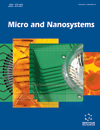
Full text loading...
We use cookies to track usage and preferences.I Understand

The objective of this review is to study the duodenal ulcer caused by helicobacter pylori using experimental animal models.
Animal models play an important role in the screening of new drugs and compounds to establish their safety and effectiveness. Peptic ulcer (PU) is a heterogeneous multifactorial disorder of known and unknown etiologies and may be caused by the imbalance between the mucosal defensive forces (prostaglandin, bicarbonate, mucus) and the stomach aggressive factors {Helicobacter pylori, hydrochloric acid (Hcl), and pepsin}. Researchers used various in-vivo animal models to evaluate the therapeutic potential of test substances. Among these, ethanol-induced peptic ulcers, NSAID-induced peptic ulcers, and pylorus ligation-induced peptic ulcers are frequently used. In this review, we focused on the H. pylori-induced peptic ulcer, as we found in many published articles that most of the peptic ulcers are due to H. pylori infection. H. pylori enters into the host's stomach using urease to fight against the acidic environment. It colonizes the host's gastric epithelial cells and releases effector proteins and toxins. The stomach epithelium, which is the primary interface, secretes chemokines that trigger neutrophil activation and innate immunity and contribute to clinical illnesses like ulcers and gastritis.
We have discussed several animal models in detail, such as the cat model, mice model, Mongolian gerbil model, pig model, rat model, and rhesus monkey model for H. pylori-induced duodenal ulcer and gastritis.
Our efforts have been devoted to summaries and explaining the mechanism of H. pylori-induced ulceration using different experimental animal models, which will help and prove to be an asset for future research.

Article metrics loading...

Full text loading...
References


Data & Media loading...